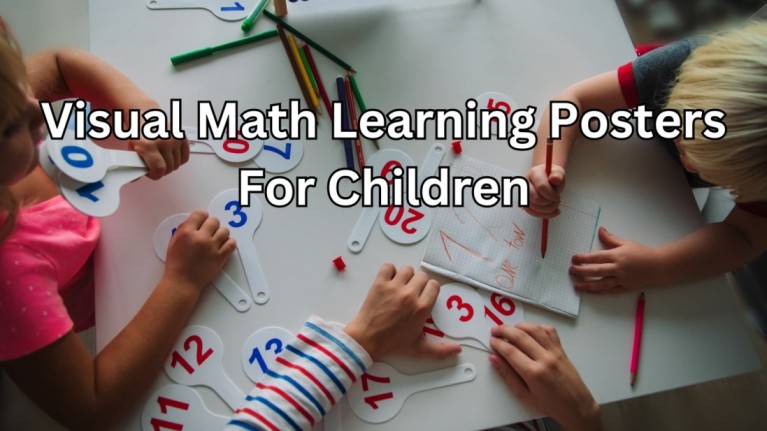Visual Math Learning Posters for Children: Making Math Fun and Engaging
Math can be a challenging subject for many children, but the right learning tools can make all the difference. Visual math learning posters are a fantastic way to introduce and reinforce key math concepts, especially for young learners. These posters are designed to make abstract math ideas more accessible and engaging through colorful visuals, illustrations, and easy-to-read information. In this blog, we’ll explore the benefits of visual math learning posters and how they can be used at home and in the classroom to enhance children’s understanding and enjoyment of math.
Why Use Visual Math Learning Posters?
Visual math posters provide several advantages in helping kids grasp math concepts:
- Engagement Through Visuals: Bright colors, images, and diagrams capture children’s attention and make math more visually appealing. This is especially helpful for kids who are visual learners.
- Simplifies Complex Ideas: Posters can break down complicated concepts into bite-sized pieces, allowing kids to process and understand them at their own pace.
- A Constant Reference: Placing posters on walls means that math concepts are always within sight, reinforcing learning passively as children go about their day.
- Builds Confidence: By having a visual reference handy, children can feel more empowered to tackle math problems, knowing they have tools to guide them.
Types of Visual Math Posters
There’s a wide variety of math posters that cater to different levels and topics. Here are some popular types:
- Number and Counting Charts: These are ideal for younger kids just starting to learn numbers and counting. They often include visuals of objects or animals to help children associate numbers with quantities.
- Times Tables: Multiplication tables are a foundational part of math education. A times table poster helps kids memorize multiplication facts, which they’ll use in countless math problems as they progress.
- Shapes and Geometry: Learning about shapes, angles, and other geometry basics is essential for understanding spatial relationships. Posters that display shapes with labels help kids recognize these forms in their surroundings.
- Fractions and Decimals: Posters that show fractions and decimals visually (like a pizza cut into slices) help make these abstract concepts more concrete.
- Measurement Units: Children often struggle with measurement conversions (like inches to feet or grams to kilograms). Posters that explain these conversions are great references for building familiarity with different units.
How to Use Math Posters Effectively
- Place Posters in High-Traffic Areas: Hanging posters in frequently used spaces like a playroom, classroom, or study area keeps math concepts in front of kids regularly, helping reinforce learning through repetition.
- Refer to Posters During Practice: Encourage kids to use posters as a reference while solving math problems. This can help build independence, as they learn to look up information on their own.
- Incorporate Posters into Games: Make learning interactive by using posters as part of a game. For example, quiz your child on times tables by pointing to a number and asking them for the product of different multiples.
Recommended Resources
For more tools and resources to inspire kids, check out these links:
- Jessica Rabbit Quotes – Fun quotes to add a bit of character and energy to your day.
- Lebron James Quotes – Get inspired by one of basketball’s greatest athletes!
- Gaming Resources – Explore the best gaming tools for those passionate about technology.
Conclusion
Visual math learning posters are a powerful, cost-effective tool to make math concepts approachable, memorable, and even fun for children. By incorporating these colorful aids into learning environments, you provide kids with a visual support system that enhances their understanding, builds confidence, and keeps math top of mind. Try adding math posters to your child’s learning space, and watch as they begin to see math not just as a subject, but as a part of their everyday world.





